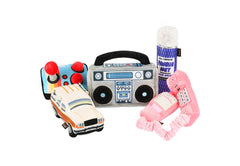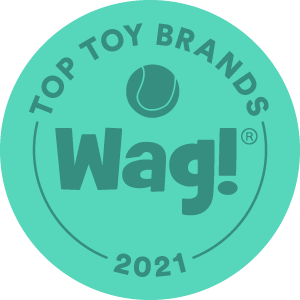Why preparing is important
The puppy you choose, apart from instincts and temperament features, already has its own life experience. While it is still very small, but it already includes communication with his peers, and with humans. The little doggie has learned well that mom is food, warmth, care, and protection. Brothers and sisters are not only playmates but also competitors, in communication with whom hierarchical behavior is first demonstrated. Pups also perceive familiar people who take care of their mother and themselves positively - as a source of food, attention, affection, and fun.
It is proven that tiny puppies remember the touch of human hands, their smell, and warmth from the very first days of life. On the contrary, after receiving pain and unpleasant feelings from a human, babies start to avoid them, perceiving them as a potential threat. In other words, the very first experience of communication is of great importance for the formation of the necessary mental reactions and positive interaction with a person.
Once you have finally chosen a puppy and adopted one, the responsibility for his life and health falls on you. It is your duty to make sure that the baby has everything he needs for a happy life. He must have fresh, nutritious food, clean water, his own corner, and most importantly - your attention and love.

Moving to a new place and the first days in a new home with strangers is the most significant event in a puppy's short life. In addition, it is also a big challenge. And you, the adopter, must do everything possible to minimize the trauma of being separated from his mother and siblings.
Before you even got home
Puppies are usually handed over to their new parents at 6-8 weeks of age. At this time, they are already independent enough and need their mother's care much less. However, when adopting such a baby, you must also become his feeder, educator, guardian, and playmate. Be sure to ask the breeder what food the puppy received, how often, and in what quantity.
It's very important to maintain continuity of nutrition, at least during the first month of life in the new place. Try to prepare his food ahead of time and make sure he has enough food and water bowls of appropriate size. It's a good idea to get detailed advice from professionals about the future diet of your growing pet.

Prearrange with the breeder to pick up the puppy in the morning or in the morning so that the baby can get used to his new surroundings during the day. It is very good if he will be under the constant supervision of a family member at first. Ask the breeder to give you something with the puppy that would smell of his mother and home nest - like a furry toy that the babies have been playing with, bedding, or just a piece of cloth. Put this on the puppy's bed or in his kennel to help soothe him and make it easier for him to cope with his first night in an unfamiliar place.
Make sure your pooch feels comfortable during his journey to his new home. You can put the puppy in a pet carrier, wicker basket, or simply hold him in your arms for the duration of the trip. Sometimes in the first minutes of the car movement, the little pooch becomes nervous, whining, acting restlessly, tossing and turning in your arms or in the basket. In this case, you need to stop the car and calm the baby. A puppy with a normal psyche soon adapts next to a stranger and during a long trip behaves calmly or begins to doze off.
Hide everything dangerous
Before picking up a puppy, it is important to prepare for the arrival of a new tenant in your home. Do not keep the puppy in the barn, pantry, bathroom, or any other room not specifically designed for housing. Don't put the dog in the garage either - that's a place for a car that smells of gasoline and motor oil, not a sensitive living creature.
That said, keep in mind that it is far from always the case that the puppy gets to know a home and an interior during his time at the kennel. Therefore, the baby will need some time to get used to the new home, learn the rules of conduct, and feel confident in it.
All things and objects that pose a potential danger to the restless pet must be removed and hidden in the house beforehand. By "danger" it is meant not only detergents, cleaning agents, and other household chemicals, but also large floor vases that can topple over, indoor plants containing poisonous substances, unstable furniture, stacks of heavy books, etc.
Tuck curtains and drapes, close all drawers tightly and hide the trash can away. Especially make sure to locate visible electrical wiring in your home and secure low-lying electrical wires from the puppy's teeth. A playing pooch can easily chew through the insulation layer and expose himself to deadly danger.
Animal physiologists note that the greatest intensity of the exploratory reflex is recorded at the age of 1.5 to 4 months. Neither before nor afterward does a puppy show such an active interest in the world around it. Puppies, just like human babies, pull new and interesting things into their mouths. They chew and eat paper, cellophane bags, Christmas decorations, foam rubber, rags, absorbent cotton, thread, and more.
Naturally, the delicate stomach of the puppy is often unable to cope with such unnatural "food", leading to vomiting, the development of gastritis, and in the saddest cases, intestinal obstruction and death. It seems that puppies simply can't tell the difference between edible and inedible, swallowing the most improbable objects.
Of course, it's no fun if he chews up your stuff or spoils your home, but it's even worse if he does some harm to himself. That's why it's important to keep everything out of reach of the puppy and make sure that he doesn't pick up anything small that might be in his mouth.
It's also worth noting that shoes of parents, family members, and guests aren't just toys and jaw-warmers for puppies, they're also sources of infection from the outdoors. Many of the bacteria and viruses of the outside world can be fatal to young puppies who have not yet received their complete range of vaccinations for infectious diseases.
Consider giving puppy his own corner or a room
It's easier to follow these recommendations if you limit your puppy's movements around the house. This is especially important when you can't control him, such as when you're at work. You may want to give your puppy only one room. It should not be located near a radiator, in a draft, or by the door.
Remember that puppies, by virtue of their physiology, will go and urinate wherever they please. This should not be scolded. The little one may wet your precious carpet, and since you can not completely eliminate the smell, even with detergents, it is very likely that the doggy will return to repeat his exploit. That's why sacrifice the beauty of the interior and temporarily remove the carpets in the room where the puppy is.
You can install a large collapsible metal cage in your apartment, bought at a pet supply store, or make a special playpen. Reasonable reduction of available space has nothing to do with imprisonment and is not cruelty to the dog (unless, of course, it is abused).
Nurturing through restriction is an important step on the road to free movement that will be given to the baby later. This approach is necessary, above all, for the safety of the puppy himself. To keep the house clean, the cage can be placed where the floor has a hard surface that is easy to wash and keep clean.
If the room is chilly, you can offer your puppy a small kennel with a bed inside as a shelter. Especially since all dogs, regardless of age, love a variety of hiding places and instinctively seek solitude somewhere in a tight corner, under a table, or behind a chair.

The kennel can be made of plywood or heavy fabric. Pet stores carry a wide range of so-called "soft places for pets" in the form of bedding, beds, and houses.
About the Author:
Taylor is a happy parent of the 2 cutest corgies and the laziest cat (yet, she’s the cute one too). Also, he is an experienced author, majoring in transport and economy. Currently works as a content writer at “write my paper for me” service Writemypaperbro.com.






